#8091m
Text
Annapurna Base Camp Short Trek 6 Days
The six-day, moderate Annapurna Base Camp Trek allows hikers to explore the Annapurna Conservation Area and reach the base camp of Annapurna, the tenth-highest mountain in the world. For trekkers with limited time in Nepal, this short trip is the ideal schedule, even though an average trek to Annapurna base camp takes 10–12 days. The walking path through the small settlement area, thick woods, high cliffs, glacial rivers, and tumbling waterfalls begins the short Annapurna base camp trip in Nayapul. Trekkers will get the greatest views of the Himalayas during the trip, and strolling through the verdant woods of pine, rhododendron, oak, and bamboo will calm your spirit. You will arrive at the trip's ultimate goal, Annapurna Base Camp, where you will be treated to breathtaking vistas of the Himalayas, after days of arduous walking.

Annapurna Base Camp Trek 6 Days Itinerary:
Day 1: Drive from Pokhara to Nayapul (1070m) and trek to Ghandruk (2012m) Duration: 4-5 hours
Day 2: Trek from Ghandruk to Sinuwa (2310m) Duration: 5-6 hours
Day 3: Trek from Sinuwa to Himalaya (3230m) Duration: 5-6 hours
Day 4: Trek from Himalaya to Annapurna Base Camp (4130m) via Macchapuchre Base Camp (3700m) Duration: 5-6 hours
Day 5: Trek from Annapurna Base Camp to Sinuwa Duration: 7 hours
Day 6: Trek from Sinuwa to Jhinu Danda trek and drive to Pokhara Duration: 5-6 hours trek

Highlights of the Short ABC Trek:
Trek through the wilderness of the Annapurna region.
Summit Annapurna base camp and enjoy a 360-degree panorama of Annapurna South (7219m), Annapurna I (8091m), Macchapuchre (6993m), Mt. Hiunchuli (6441m), Gangapurna (7455m), and others.
Explore the culture and lifestyle of the ethnic Gurung and Magar communities.
Cross suspension bridges, and small streams, admire waterfalls, rhododendron forests, and wildflowers.
To learn more about the trekking cost and detailed information, reach out to us at: https://www.beyondthelimitstreks.com/blog/annapurna-base-camp-short-trek-6-days
1 note
·
View note
Text
【2024年】ダイヤ改正前の鉄道撮影
2024年3月15日、ダイヤ改正前日となった長野県北部で鉄道を撮影してきた。久々の鉄道撮影である。
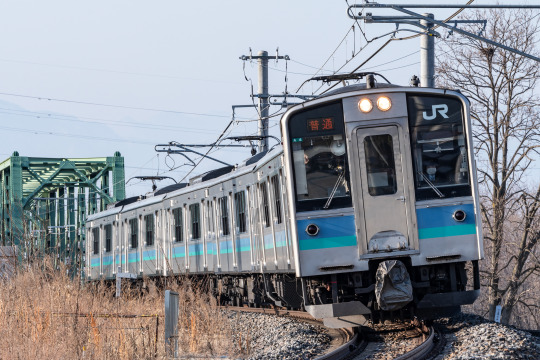
※写真は全て管理人が撮影・編集したもので、著作権があります。複製や加工などの二次利用を厳しく禁止しています。ルールが守れない方は必要な措置を講じる場合がありますので、ご注意ください。
信越本線の川中島~安茂里にある犀川カーブを訪れた。アウトカーブを駆け抜ける列車が撮影できる。E127系を6両繋げた普通列車。日中はワンマン運転を行っており、6両編成は見ることができない。この姿は同年3月16日のダイヤ改正をもって1年で終了したようだ。
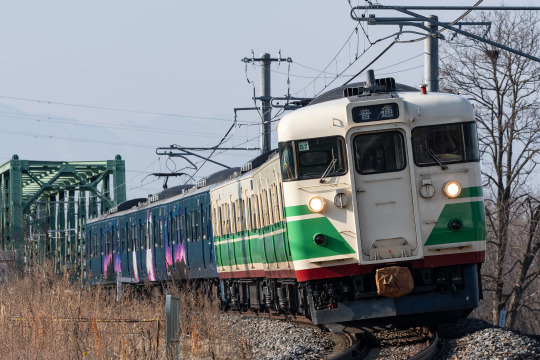
しなの鉄道線から直通してきた平日朝の普通列車。115系を6両繋げている。手前の車両がS7編成の初代長野色、後方の車両がS2編成の佐久地域星空トレイン「晴星」。115系は新型のSR1系に置き換えられて、運用数が減少している。

211系6両による平日朝の快速列車。列車番号8523Mは、8091Mの特急信州1号に置き換えられて消滅となった。列車番号を示すLEDを写すためには低速シャッタースピードが必要。1/100秒で撮影した。見かけ上速度が遅く見えるアウトカーブが、最適な撮影場所だ。
~~~
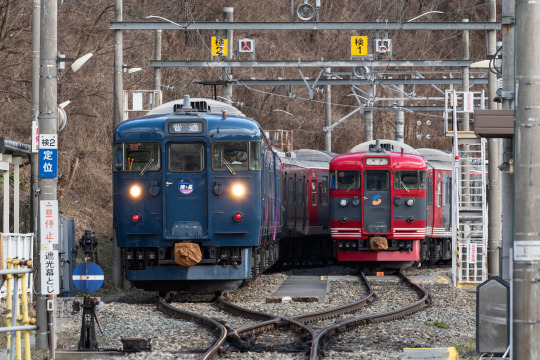
2024年3月13日撮影。しなの鉄道115系S2編成には、「晴星」の塗装とラッピングが行われている。2021年9月26日から2024年3月15日まで、佐久地域の美しい星空をPRしてきた。車両の先頭と最後尾には「晴星」のミニヘッドマークがついている。

戸倉駅の裏にある車両基地を出区する「晴星」。車両側面には浅間山と八ヶ岳の稜線、パラボラアンテナと煌めく星空のイラストが描かれていた。
~~~

最終運行日の2024年3月15日、長野駅から上田駅まで乗車した。乗客には最終運行日限定の特別グッズ「記念乗車証明書」が頒布された。また上田駅では参加者にノベルティグッズが頒布された。

佐久地域振興局としなの鉄道の職員をはじめ、撮り鉄のみならず地域の人たちやしなの鉄道を愛する乗客が、ペンライトをもってお見送り。ヘッドマークも限定のものが掲げられていた。上田駅に約15分間停車したのち、屋代駅に折り返し、疎開回送が行われた。

屋代駅到着後はパンタグラフが下ろされて照明が消えていた。115系S2編成は「晴星」のラッピングで役目を終えた。今後は廃車解体となるようだ。

しなの鉄道ではもう一車両引退した車両がいた。しなの鉄道オリジナル色の115系S14編成だ。北陸新幹線が長野~金沢で開業した際に導入された115系で最後の生き残りだった。しなの鉄道に残る115系は残りS1・3・4・7・9~11編成(S8編成は観光車両ろくもん)の全8編成計24両となった。新型のSR1系は全16編成計32両となり、SR1系が115系の在籍数を上回った。今後115系を撮影するのは相当難しくなるだろう。
久々に鉄道を本気で撮影した。たまには鉄道写真も悪くない。
※写真は全て管理人が撮影・編集したもので、著作権があります。複製や加工などの二次利用を厳しく禁止しています。ルールが守れない方は必要な措置を講じる場合がありますので、ご注意ください。
1 note
·
View note
Text
Mardi Himal Trek
##https://eternalhimalaya.com/mardi-himal-trek##
##https://eternalhimalaya.com/mardi-himal-trek##
Mardi Himal Trek
Mardi Himal Trek is a 10-day trek and is a fantastic alternative to the crowded Poonhill trail. It is one of the most popular off-beaten trekking routes in the shadows of the Annapurna Himalayas.
Thus, it is perfect for travellers looking for isolated trekking trails. The trail goes from one base camp to the other in a gradual manner while exploring the Annapurna Conservation Area.
The Mardi Himal Trek is an interesting experience that covers the off-beat trails which offer sublime views of the Annapurna Himalayas. It combines the serenity of several villages with lush forests and hills.
The bio-diversity along the trail is also a praiseworthy highlight. Similarly, the Mardi Himal Trek also offers a close-up into the Gurung culture on visits to villages like Siding.
The Mardi Himal Trek starts with a drive from Kathmandu to Pokhara. Another drive from Pokhara leads to the trailhead of the trek at Kande. The actual trek starts here as you head to Low Camp.
Theron, the trek continues further north towards Forest Camp. Next, you ascend to the High Camp. A diverse set of vegetation covers the entire trekking trail.
These forests also shelter a number of wildlife species. Lastly, you trek to Upper View Point which is also the highest point of the trek.
The viewpoint offers great vistas of Mt. Fishtail (6997m), Mardi Himal (5553m), Annapurna (8091m), and Hiunchuli (6441m). On the return trip, you head to Siding village which provides a chance to explore the Gurung culture.
Highlights
Explore the major landmarks of the Pokhara Valley
Head to the Mardi Himal Base Camp and observe the Himalayan panorama
Observe surreal views of mountains like Annapurna (8091m), Lamjung (6983m), and Machhapuchhre (6997m)
Explore the Annapurna Conservation Area
Itinerary
Expand All
Day 1:
Arrival at Kathmandu
The journey begins with your arrival at the Tribhuvan International Airport in Kathmandu. Here, our company representative will receive you and take you to the hotel. After you freshen up, you can explore some of the Newari heritage.
Accommodation
3 Star Hotel
Meals
Welcome Dinner
Maximum Altitude
1300m
Day 2:
Drive to Pokhara
Day 3:
Drive to Kande, trek to Forest Camp
Day 4:
Trek to Low Camp
Day 5:
Trek to High Camp
Day 6:
Hike up to Upper View Point, back to High Camp
Day 7:
Trek to Siding Village
Day 8:
Siding Village to Pokhara
Day 9:
Drive to Kathmandu
Day 10:
Departure to International Airport
Cost Details
Airport picks up and drop by private vehicle.
3 nights’ accommodation in Kathmandu with bed and breakfast basis.
Kathmandu sightseeing by Private guide and private transportation
Kathmandu – Pokhara – Kathmandu transportation.
Your standard meals (Breakfast, Lunch, and Dinner) during the trekking.
All necessary paper works and conservation entry permits.
All accommodations in hotel, lodges/tea houses
An experienced Government licensed guide and porters (1 porter for 2 peoples).
Medical supplies (first aid kit will be available).
Farewell dinner with typical Nepali restaurant
All government taxes.
Map & Photos
Mardi Himal Trek map
Useful Info
A Day on a Hike
Each morning we'll wake up early, freshen up, get ready and pack our bags before having breakfast. After a hearty meal, we will be on the trails by 7 or 8 am which varies according to the nature of the trek. Around midday, we will be taking a lunch break and resting after walking for 2-3 hours. Then we’ll be walking towards our last destination of the day and reach our destination usually in the afternoon. For the rest of the afternoon, we will explore the village and nearby places.
At about 6 or 7 pm we’ll have dinner. Once we finished our supper we spent our evening interacting with others, playing games, watching videos, reading books, etc. Before going to sleep, the trek leader/guide will give us a briefing about the next day’s plan.
The difficulty, Physical Fitness, and Health
Mardi Himal is rated as a medium-difficult trek (moderate grade) by novice trekkers because of long tiring walks and steep uphill climbs. However, it is relatively easy as it is one of the shortest treks, has a very low risk of altitude sickness and the route doesn’t lead to arduous locations. Every single day you hike for about 5 to 6 hrs and take a rest between walks.
It would be an easy trek as you will be trekking more in lowlands and short distances in high elevations. The trekking route consists of straight paths, steep long ascends, and descends. Also, note that you do not need any experience or technical expertise for the Mardi Himal trek. Moreover, being physically fit and preparing for this journey enhance the stamina and strength of your body. In Order to achieve that you should regularly jog and exercise for 2 weeks before the trek.
It is advisable to carry a positive attitude and strong determination alongside being healthy with a fit body. Before booking this trek make sure to inform us if trekkers have pre-existing medical conditions related to heart, lungs, and blood diseases.
Accommodation Details
Our clients will be accommodated in 3-star hotels in Kathmandu (3nights) and Pokhara (2nights) where you will have a twin shared a room with an attached bathroom, free Wi-Fi, T.V, power, laundry facilities, and 24hrs hot shower as well.
During the trek you'll be accommodated in teahouses (also known as lodges) with a very basic facility as the trails of Mardi Himal is not often visited by tourist compared to other treks of Everest and Annapurna region. This trek package comprises six overnight stays from the lodge to lodge while trekking. Although single rooms are easily available in Kathmandu and Pokhara on request by our clients it might be very difficult to find them in trekking regions (except during off-seasons).
At the lower altitude, you may get better quality lodges with all the necessary facilities like in cities but as you reach higher altitudes the lodges are far more basic with bare necessities. Generally, you'll be staying in a twin sharing room at Low camp, High camp, and Forest camp.
Meals and Drinking Water During the trek
Despite being graded a moderate trip the trek to Mardi Himal could be taxing at some point, after all, trekkers are going to trek through the Himalayas of Nepal. Trekkers will require a lot of energy to climb steep uphill and downhill and long straight routes. There are nutritious and delicious foods served by the tea houses/lodges on trekking routes to keep refueling your body with all necessary nutrients. These lodges serve authentic Nepalese food as well as more common international cuisine (Continental, Italian, Tibetan, Indian, etc) but at high elevations, the menu options get shorter.
Here are some the of menu items served at tea houses/lodges:
Breakfast
Pancakes, Eggs, Corn Flakes, Tibetan bread or chapati, Oatmeal, French toast, Toast with peanut butter, butter, jam, honey, cheese, Muesli, Bread, Local Tsampa porridge, Vegetables, Fruits, Hot drinks (varieties of coffee, teas, hot chocolate, etc)
Lunch and Dinner
Steaks, Macaroni dishes, Momo (dumpling), Sandwiches, Dhal, bhat (rice)and Tarkari, Pasta, Sherpa stew, Tibetan bread, Variety of Soups, Thenthuk Spaghetti Noodle, Fried rice, Potatoes items, Thukpa, Vegetable curry, Snacks (Papad, Prawn), Desserts (Rice pudding, Apple pie, etc), pizza (Tomato, Mushroom, Mixed), Korean ramen, Hard drinks, egg/chicken/meat dishes, etc
All standard meals (Breakfast, Lunch, and Dinner) during the trek are included in the package except the table drinks (alcoholic and non-alcoholic beverages) and snacks are excluded from the package. Therefore, you have to pay for it.
We highly advised you to eat fresh vegetables and drink a liquid (lemon tea, hot lemon, green tea, ginger tea, and garlic soup which is a must ) at high altitude. Although there are plenty of non-veg items in lodges, we don't recommend them for hygiene purposes. Also, avoid alcohol, dairy, cheese, hot chocolate, and caffeinated items.
Drinking water is available at lodges at a cost. Since plastic bottles are banned in the Annapurna region, you cannot buy or take bottled water (mineral water). Moreover, you can either buy and fill your water bottle with boiled water from lodges or filter it with water purifying pills or gadgets.
Best season to visit Mardi Himal
Weather is the key element in determining a favorable time to trek to Mardi Himal. Even though trekking to Mardi Himal is possible throughout the year, there are advantages and disadvantages to trekking in every season.
Trek to Mardi Himal is most suitable during the spring and autumn seasons because at this time the clear blue sky plays a great part in highlighting the amazing views. However, the treks become a little bit difficult in summer and winter. During winter it gets freezing cold and may receive snowfall, whereas the summer season clashes with monsoon season, which makes the trails wet and slippery to trek.
Spring season (March-May)
Weather is at its best during this season with a mild temperature and low rainfall creating a perfect trekking environment. After the month of March trekking season begins and various colors of rhododendron flowers bloom by April making the forest more vibrant. During these months you can enjoy the unhindered spectacular view of Mountain scenery as the sky is unclouded. From mid-March, up to mid-May, the temperature starts to rise.
Summer season (June-August)
Summer comes along with the monsoon due to which the trekking route becomes wet and slippery. The temperature will rise simultaneously making the Annapurna region very hot. Even though rain may hinder you, the trekking region will be full of various green vegetation at this time, adding greenery to the landscape. During the afternoon clouds gather up but disappear at night and mornings are usually clear.
Autumn season (September-November)
The best time of the year for Mardi Himal Trek is Autumn. In Nepal, it is one of the peak seasons for trekking as autumn provides the perfect conditions for trekking such as low perspiration, moderate temperature, and mild wind. Because of the summer rainfall, the skies become clear as Autumn is a post-monsoon period. You get to see a magnificent vista of mountains on a sunny day and enjoy amazing starry skies at night.
Winter season (December-February)
In the Annapurna region winter's trek is less popular among trekkers due to extreme cold yet some adventurous trekkers are thrilled to trek even in winter. Although being cold, winter usually offers quite clear skies with a spectacular view of snow-capped peaks of mountains. The winter treks are challenging because of snowfall. However, the trails are less crowded during winter. We don’t recommend the winter trek to beginner trekkers.
Travel Insurance for Mardi Himal Trek
Mardi Himal is a short, easy trek with very little chance of altitude sickness as Mardi Himal is not that high. Nonetheless, trekkers should take extra measures to be prepared because they may get injured, face sudden climate change, encounter unforeseen events, fall ill, natural disasters may occur such as landslide floods, etc therefore travel insurance is necessary. To back up yourself in case of emergency travel insurance is mandatory for every traveler.
Trekkers have to send a copy of their travel insurance policy certificate after booking the trek. Moreover, the insurance policy must cover helicopter rescue, evacuation expenses, and medical and emergency repatriation at high elevations.
Make sure to double-check the company policy whether they cover helicopter rescue and evacuation up to 5000m before buying the travel insurance.
Immunization Certificate/Vaccinations
Vaccination against malaria, cholera, yellow fever, tetanus, typhoid/paratyphoid, BCG tuberculosis, hepatitis, meningitis, rabies, dengue fever, giardia, and polio are recommended by us. However, the requirements for the vaccination keep changing depending upon the situation. In case of any current changes on vaccination requirements, you have to be up to date and check the situation of the place before traveling. Consult your doctor or GP at least 2 months before the trek about the immunization you require to travel safely.
It is obligatory for the travelers to submit the ‘Fully Vaccinated Covid-19' immunization certificate.
Nepal Tourist Visa Info
All Mardi Himal Trek foreigners, excluding Indian nationals, will require a visa to enter Nepal. However, European countries can obtain visa-on-arrival at the Tribhuvan International Airport, Ktm, Nepal.
Passport validity is required for at least 6 months and should be beyond the total duration of the trip. Also, require a passport size photo for visa application. The cost of a Nepal Tourist Visa differs according to the number of days it is issued for. The Nepal Tourist Visa fee is USD 30 for up to 15 days. For up to 30 days, the visa costs USD 50 whereas the visa fee for 90 days costs USD 125.
youtube
Citizens of SAARC and China will receive a free visa. Some countries' citizens may not receive an on-arrival visa and these countries are Ghana, Swaziland, Cameroon, Liberia, Ethiopia, Palestine, Nigeria, Zimbabwe, Somalia, Afghanistan, and Iraq. Therefore, nationals from these countries can contact their local Nepalese embassy.
For more information related to visas search at https://www.immigration.gov.np/
Currency Exchange in Nepal
Nepali currency (Rupee) is a closed currency; therefore, you can only exchange your foreign currency upon arrival in Nepal. Since US dollars are widely accepted, we suggest traveling with US dollars. The majority of banks do not accept that foreign currency which is old, torn, or faded. It is advisable to carry new, clean and untorn notes to obtain the local currency ‘Nepali Rupees (NPR)’.
The foreign currency can be converted through local banks or a bank ATM and authorized ‘’Money Changers’’ or ‘’Foreign Exchangers (FOREX)’’ around Thamel in Kathmandu. Alternatively, you can exchange a small amount of cash at all the hotels in Kathmandu too. Every morning the money changers will post the ongoing rates on their board which is placed outside of the store. The rates don't vary that much from store to store.
Some of the ATMs are open 24 hrs a day and accepts international card; moreover, most ATMs will charge a usage fee on each transaction. Cash from ATMs is given out in Nepali currency (NPR) only. In Nepal, there is a limit on how much amount of cash you can withdraw per transaction. If you are using a foreign card, the maximum limit of withdrawal amount will be 35,000 for a 500 rupees processing fee. However, the withdrawal amount varies depending on the bank and the limits often range from 10,000 NPR to 30,000 NPR.
A service fee charge of 4% or more will be imposed depending upon the banks if you utilize the money exchange facility at financial institutions and banks.
On the trek, there are no money exchange services and banks. Furthermore, there are some ATMs available in Jomsom on the Annapurna circuit trek but are not reliable. So, we suggest you exchange your foreign currency in Kathmandu or Pokhara before you depart for the trek, as you will get a more favorable exchange rate. Plus, it is a far more convenient, easier, and safer option. Since the tea houses/lodges of trekking regions prefer local currency, we recommend you to take a sufficient amount of Nepali currency on the trek for personal expenses.
# We advised you to avoid the airports and hotels to make your currency exchanges, for the best rate.
Trekking in-group/singles
We handle all group sizes whether it be small (private trek) or large size trekking groups. Group discount is applicable when your group consists of more than 5 people and should have your own person (family, friends, or colleagues) in the team otherwise the price remains the same for private touring or group joining. If you are interested in joining the fixed group for this trip please keep checking the departure link when it's available we will send you complete info (date and price) related to the trek or you can book an entire private trip at a reasonable cost. Each and every group will be led by a team leader/ guide and one porter for two trekkers. In case your group exceeds more than 10 people we will provide an assistant guide.
Personal expenses on the trek
We request our clients to carry extra cash (Nepali currency) during the trek as the package won't cover some of the trip expenses including snacks, alcoholic/non-alcoholic beverages (table drinks), souvenirs, tips for guides, porters and drivers, hot shower, Wi-Fi, mineral/boil water for drinking, recharge, etc. Other additional personal expenses include international airfare, visa application, travel insurance policy purchase, extra accommodation, and food charges in Kathmandu.
Wi-Fi/Internet, Communication, and Electricity
Wi-Fi/Internet is available at lodges, however, you are required to pay an extra charge. There is also electricity available in lodges/tea houses as well, from there you can charge your devices by paying a certain amount. To communicate at high altitudes we use mobile phones for that you have to buy a local sim from Kathmandu before the trek. Although you will get a signal, it might not be strong enough. At least once a day Eternal Himalaya will contact a team leader to know about the whereabouts of the trek team and keep notifying us about the team.
Eternal Himalaya Hiking Team
Our expert guides will escort you throughout the trek with the aim of making your journey enjoyable and comfortable. Every single guide of our company is well experienced, trained, and licensed. They have been climbing and trekking by leading a group for many years.
All of our crew members have what it takes to lead a successful trek. We value our staff members and take good care of them. Each staff member is provided with good payment, insurance coverage, necessary equipment, gear, meals, transportation, and accommodation during the trek. Medical care is also provided by us in case of an injury and illness.
Our crew members' qualities are:
Excellent interacting skills and fluent in English and other major languages)
A certified Trekking Guide
Knowledgeable about the facts and keep track of weather forecast
Well trained in Rock climbing
Undertook the Biodiversity and Conservation course
Wilderness First Aid Training
Luggage
Weight allowance for Nepal’s internal flight is 15 kg as domestic airlines operate strict limits of a maximum of 10 kg for main luggage and 5 kg for a backpack. If your luggage exceeds 15 kg, you have to pay for the excess baggage weight which will cost USD 1 or more per kg depending on the region.
Normally, we assign one porter to carry the main luggage of two trekkers during the trek. The weight limit for the luggage is 9kg per trekker. As one porter will be carrying the weight of the two trekkers, the combined weight will be 18kg. We care for the porters and
0 notes
Text
Upper Mustang Trek
Mustang lies in and around the Annapurna conservation area. So as you trek to Upper Mustang, you can catch glorious sights of the mountain ranges - including Dhaulagiri (8167m), Annapurna I (8091m), and Manaslu (8,163m).
Your journey begins with a drive from Kathmandu to Pokhara while enjoying the views of mountains, traditional villages, terraced fields, and the raging Trishuli and Marsyandi rivers. Pokhara is the tourist capital of Nepal. Here, you can enjoy the views of various lakes and Himalayan peaks - including Dhaulagiri, Manaslu, and Lamjung Himal. In fact, you can see the reflection of these mountains in the lakes.
In Nepal, different category visitors and trekkers comes here and doing their own choices, so regarding these varieties, we got some clients, they want short and sweet luxrious tour and trekking, according to their choice and offers, 7 Days Everest Base Camp Luxury Trek is high demanded and organized many groups. This year 2023 also we targeted to high class clients for this nice trek.
There are other trekking regions too which has many trekking routes and regions like as Everest Base Camp Trek, 3 high passes trek, EBC and Gokyo Lake Trek, Everest View Trek and Langtang Valley Trek.
Except these trekking, other travel packages also available in Nepal. Nepal Package Tour, Exclusive Tour, World Heritage Tour, Seinior Citizen Holidays or Tour, Family Holidays and Best Nepal Tour are very popular and which includes all important travel parts of Nepal.
For adventure travel, there are many activities like as Everest Mountain Flight, Bungy, Zipline, Helicopter Tour and Rafting. Also Guide and Porter Services are mostly demanded by trekker, traveler and climbers for Nepal Adventure Trek.
We operate all kinds of tour and trekking packages in Nepal, Tibet and Bhutan too.
0 notes
Text
Why should you visit Nepal once in your life
Is Nepal at the top of your bucket list? Are you planning to visit Nepal? Looking for reasons to visit Nepal or things to do while in Nepal. It will be a challenge to pack everything in your travel while traveling in any country. Here is an overview of the activities and experiences you can enjoy while visiting Nepal.
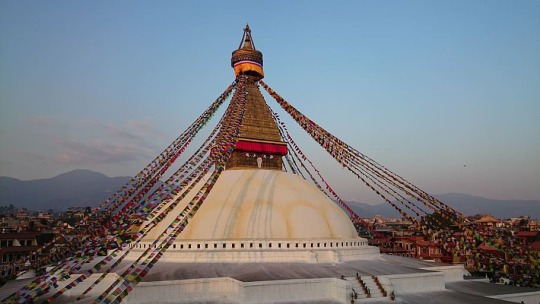
Many Activities
Nepal is the best destination for avid travelers and adventurers who love adrenaline rush and life changing experiences. Trekking to the foothills of the world's highest mountain, Mount Everest (8848m) and trekking to incredible places in the Himalayas like Annapurna, Langtang, Mustang, Manaslu etc. can only be done in Nepal. Mountaineering and hiking, rafting, jungle safaris and apart from these fun and exciting experiences like paragliding, bungee jumping, ultra flights, zip flyer etc. can be found in Nepal.
UNESCO World Heritage Site
Nepal is a multilingual, multi-ethnic, federal country in Southeast Asia. Nepal has 10 UNESCO World Heritage Sites and its capital Kathmandu and its surrounding area are home to 7 World Heritage Sites. Buddhanath, Pashupatinath, Swoyambhunath, Patan Durbar Square, Kathmandu Durbar Square, Bhaktapur Durbar Square, Changu Narayan, Lumbini , Sagarmatha National Park and Chitwan National Park have been listed as UNESCO World Heritage Sites. The daily activities, rituals, traditions, rituals of the Nepalese people are a must-see when you visit Nepal.
UNESCO Cultural Heritage Sightseeing in Kathmandu
Eight of the highest mountains in the world are in Nepal
Many people refer to Nepal as the homeland of the Himalayas. Of the 14 mountains higher than 8,000 meters, Nepal is home to 8; Mt. Everest (8848m), Kanchenjunga (8586m), Lhotse (8516m), Makalu (8463m), Cho Oyu 8201m), Dhaulagiri (8167m), Manaslu (8163m) and the Annapurnas (8091m). Climbing these mountains may not be everyone's cup of tea, but it is possible to get close to all these mountains just by walking up to their foothills. For example; Old Everest base camp trek to Annapurna base camp, Makalu base camp, Dhaulagiri circuit etc. is a popular route that will bring you closer to these majestic mountains.
Unique Geography
For a country of its size, Nepal has an amazing landscape. It ranges from as low as 59 meters (194 ft) in the tropical Terai to the world's highest Sagarmatha of 8,848 meters (29,029 ft) or better known as Mount Everest. Also, Lake Tilicho, located at 4,919 m above sea level, is one of the highest lakes in the world. Also, to name: Dana is a deep mine, Arun Valley is a deep valley, caves and holes like Halesi, Mahendra Cave, semi-desert Manang and Mustang, etc. there are in Nepal which are very rare and beautiful in their own way.
Nepalese food
Food in Nepal is unique. From the national dish Daal Bhat Tarkari (lentils, rice and vegetables) to many types of Momo (dumplings), everything you eat here will be delicious. The food in Nepal is a combination of all the Asian dishes you have tried. Nepalese cuisine is a fusion of Chinese, Tibetan, Indian and Newari cuisine. A Newari dish, Thakali Set is a traditional Nepalese dish that you must try at least once while visiting Nepal.
Peace and Tranquility
Nepal (Unending Peace and Love) is a land of peace and unity. Nepal is the birthplace of Lord Buddha (Light of Asia). Nepalese welcome and respect visitors like gods. "Atithi Devo Vawa" that is "Guests are God" is a word that Nepalese people put with their pure heart. Nepal is truly a travel paradise for every traveler. Nepal is a small country where people of different races, cultures, traditions and religions live here in peace, harmony and understanding.
Tea room and Camping area with Resident
In addition to the different culture and nature, you can experience different types of travel while visiting Nepal. From easy day trips to multi-day or even week-long trips, from the great Annapurna to the highest peak in the world, from the pristine Rara Lake to the remote Tibetan kingdom (Upper Mustang) and much more others to review. A visit to Nepal cannot be completed in just one moment, one will come back and get deeply involved in the true beauty and culture. As the slogan says, "Once is not enough". Most of the routes support teahouses, rest houses that provide accommodation and food for the travelers. Some of the offbeat routes, however, require camping logistics to travel.
Architectural Craftsmanship and Works of Art
Various compelling and usually exclusive arts and crafts are created economically in Nepal. 'Thangka' paintings, handicrafts, mineral arts, metal carvings and pottery to other artists make the beauty of Nepal well known! While traveling in Nepal, home crafts, handmade carpets, etc. is the most beautiful and popular monument for domestic and international tourists. You can buy any of these products for your family, friends and loved ones as souvenirs of Nepal.
An Incredible Views
Nepal has amazing views. Especially the Mountain View offers a unique panoramic view of the Himalayas. As mentioned earlier, Nepal includes eight of the fourteen highest mountains in the world, including the highest mountain, Mount Everest (8848 m). Other high Himalayan mountains are Fishtail (Machhapuchhre), the sparkling Annapurna mountain, Ama Dablam, etc. are some of the most attractive sights for avid visitors, travelers visiting Nepal. Also, Nepal offers you many views which not only give you the best views but also help enhance the beauty of the majestic Himalayas. Some of the best views of Nepal include Kala Patthar, Gokyo Ri, Poon Hill, Nagarkot, Mohare Danda, Muldai Viewpoint and many more.
#i want to visit nepal#nepal is famous for#why visit kathmandu#beauty of nepal#nepal#nepal capital#where is kathmandu#time in kathmandu
0 notes
Link
0 notes
Text
Annapurna Trekking in Nepal
Annapurna Region is one of the most popular trekking Regions in Nepal. Annapurna is the best area for having panoramic views of eye-catching Himalayan scenery, relaxed walking on well-defined Annapurna trails, and quality local trekking lodges, which make Annapurna trekking one of the best trekking routes in the world.
Himalayan View from Poon Hill, Annapurna Region!

Annapurna trekking has been wildly recognized as a paradise for nature lovers and adventure lovers as there are many peaks in Annapurna Region. Annapurna trekking offers spectacular views of the several Himalayas including Annapurna, Dhaulagiri, Manaslu, Fishtail, and beautiful landscape, wild animals, Monasteries, and Temples as well.
In the Annapurna Region, there are various trekking destinations such as the Annapurna circuit trek, Annapurna base camp trek, Jomsom Muktinath trek, Ghorepani Poon hill trek, Ghandruk Trekking, Mardi Himal trek, Nar phu valley trek, Tilicho Lake Trek, Upper Mustang trek and Poon hill Trek.
With these features, Annapurna Trekking has been well admired and well-liked by the trekkers, therefore it is also wildly known as a trekker's paradise. The trekkers will not only see the scenic views of the high Himalayas but also the snow leopards, blue sheep, and other species of birds namely kokla, blood pheasant, etc, butterflies, and insects, because, the upper sub-alpine grassland of the Annapurna region harbors these some of the rare species of the earth.
Furthermore, the native plants can also be found in this forest, therefore the government of Nepal also has declared the conservation area and launched Annapurna conservation projects as well in the region, especially to conserve the varieties of orchids and rhododendron apart from the species of birds and animals and sensitize local people residing alongside.
Annapurna trekking trails no doubt are the most popular trekking destination for trekking and adventure lovers. We will have panoramic sceneries of the Himalayas,which include Mt. Dhaulagiri (8167m), Mt. Annapurna I (8091m) Mt. Manaslu (8163 m), Mt. Annapurna II (7937 m.), Mt. Annapurna III (7555m), Mt. Annapurna IV (7525m), Mt. Annapurna south (7219m), Mt. Nilgiri (7041m), Mt. Fishtail also called Mt. Machhapuchhare (6998m), Mt. Hiunchuli (6441m), Mt. Lamjung Himal (6986m), Tukuche peak (6920m), Tilicho peak (7134m).
Furthermore, there are settlements of diverse communities such as Bramins, Chhetrees, Tibetian sherpas, Thakalis, Magars, and Gurungs. Subsequently, it is the trail that is rich in wild animals such as Himalayan Thar, Leopards, Jackal, and many species of birds such as pheasant.
Annapurna trekking is easily accessible, hotels/Lodges/Guest Houses in the hills are plentiful, and treks here offer good scenery of both high mountains and lowland villages. There are many options to reach the Annapurna destination, you can take a direct tourist bus or by flight to Pokhara or Jomsom and by bus to Beshishar, from where our trekking begins to the Annapurna Circuit.
0 notes
Text
Annapurna Circuit Trek, one of the most popular treks route in the world
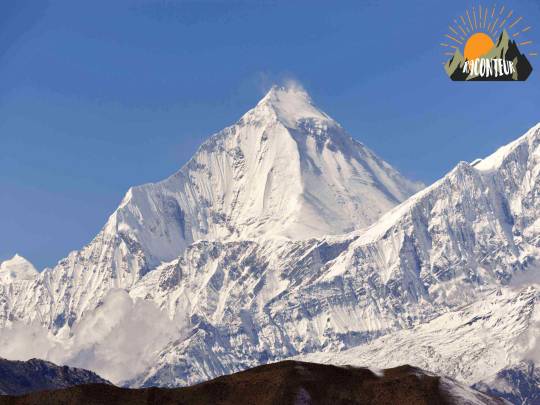
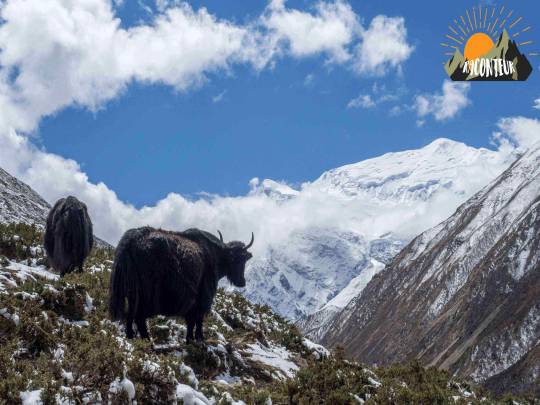

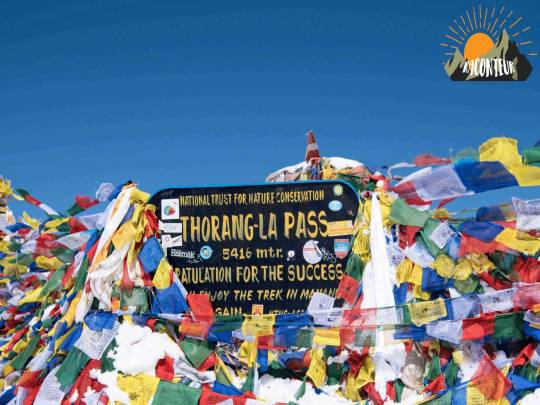
Trek Highlights
Mind-settling view of Mt. Dhaulagiri(8167m), Nilgiri(7600m), Annapurna (8091m), Annapurna South(7219m), Tukuche Peak, Dhampus Peak, Gurja Peak, Thapa Peak and other stunning peaks around. Highlighting all the height is a holy mountain, the Fishtail @ 6953m, is a virgin mountain.
Wholesome view of Chulu east and west as with perfect accompaniment of desert landscapes of Manang where you see Yak and Blue sheep grazing.
Superb clear view of Mt.Annapurna II (7940m), Annapurna III, Annapurna IV, Gangapurna, Khangsar Kang and marvelous Tilicho Lake.
Satisfy your senses and soul by visiting one of the holy temples, the Muktinath temple, where Lord Vishnu is paid homage
The rich, deep, and green Marshyangdi river valley allows one to enjoy high hills and green bushes until Dharapani.
One of the adventurous hikes to Tilicho Lake, the only highest lake in the world at 4980m above sea level.
Encounter and observe green hills, beautiful landscapes, and rice terrace fields until you reach Jagat.
Indulge and participate in the culture, customs, traditions and unique lifestyle of locals.
Mind settling view of Mt Manaslu (8153m) and Ngadi Chuli (7800m).
The fantastic colour play of nature with green fields and desert land.
A pleasant drive experience from Kathmandu to Besisahar.
Natural hot spring bath at Chame.
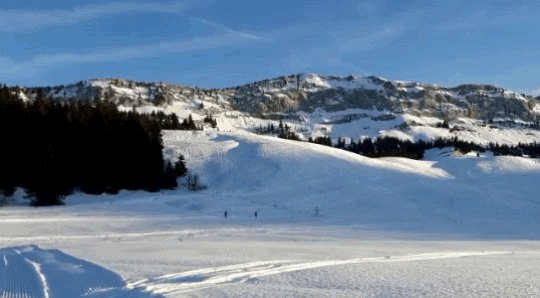
#thorong la pass trek map#thorong la pass trekking cost#thorong la pass map#tilicho and thorong la pass trek#thorong la pass altitude#thorong la pass deaths#thorong la pass to muktinath#thorong la pass district
0 notes
Text
Annapurna Base Camp Trek
##https://eternalhimalaya.com/annapurna-base-camp-trek##
##https://eternalhimalaya.com/annapurna-base-camp-trek##
Annapurna Base Camp Trek
Annapurna Base Camp Trek is one of the most beautiful trekking packages in Nepal with loads of fun and adventure. This trek offers you beautiful views of snow-capped mountains.
The trek puts together the exploration of many villages on the way along with their unique culture. It is a shorter and easier trek in comparison to other high-altitude treks.
Annapurna Base Camp trek explores the lush forests and local villages on many occasions. The bio-diversity of the Annapurna Conservation Area is also an attraction.
Likewise, the panorama of the Annapurna, Machhapuchhre or Fishtail, Lamjung, Mardi Himal, and Nilgiri ranges are the highlight of the trek. The ABC trek heads to the base camps of two mountains: namely, Annapurna I (8091m) and Mt. Fishtail (6997m).
The trip begins as you drive from Kathmandu to Pokhara. Another short drive to Siwai signals the start of the trek.
Trekking along the Modi River, you pass Chhomrong and head to Bamboo. The teahouses and human settlements start to thin out while you make your way to Deurali.
Thereafter, the trip meets alpine vegetation when trekking toward the Machhapuchhre Base Camp.
The view of Mt. Fishtail (6997m) is surreal from the base camp. Further, a challenging trail leads to the Annapurna Base Camp. Here, the Annapurna Himalayas surround the base camp and offer a blissful environment.
As the descent begins, you make a stop at the natural hot springs of Jhinu Danda and head to Pokhara.
Highlights
Explore the numerous natural landmarks of the Pokhara valley
Observe the panoramic views of the Dhaulagiri and Annapurna ranges along with Mt. Machhapuchhre (6997m)
Enjoy Gurung culture and hospitality on the trek
Trek through the enchanting Annapurna Conservation Area
Itinerary
Expand All
Day 1:
Arrival in Kathmandu and transfer to hotel
You will arrive at the Tribhuvan International Airport where a company representative will come to greet you. Then, you will proceed to your hotel where you can rest. Later, you can also Annapurna Base Camp Trek go around the block for explorations. You can go shop for souvenirs or go for experiencing the city atmosphere.
Accommodation
3 star hotel
Meals
Welcome Dinner
Maximum Altitude
1300m
Day 2:
Drive or fly to Pokhara.
Day 3:
Drive to Siwai by bus and trek to Chhomrong.
Day 4:
Trek to Bamboo. Walking 6 hours.
Day 5:
Trek to Deurali. Walking 5 hours.
Day 6:
Deurali to Annapurna Base Camp. Walking 4/5 hours.
Day 7:
Annapurna Base Camp to Bamboo. Walking 6 hours,
Day 8:
Bamboo to Jhinu Danda, walking 6 hours
Day 9:
Trek to Siwai and drive back to Pokhara , 5 hours walk and 2.30 hours' drive
Day 10:
Drive to Kathmandu by private vehicle 7 hours (Option: private transport or domestic flight) |Farewell Dinner
Day 11:
Transfer to airport for final departure
Cost Details
Airport picks up and drop by private vehicle.
3 nights’ accommodation in Kathmandu with bed and breakfast basis.
2 nights’ accommodation in Pokhara with a bed and breakfast basis.
Kathmandu sightseeing by Private guide and private transportation
Kathmandu – Pokhara – Kathmandu by private transportation.
All ground transportation by private vehicle.
Your standard meals (Breakfast, Lunch, and Dinner) during the trek.
All necessary paper works, conservation area, and restricted area entry permits.
All accommodations in hotels, lodges/tea houses during the trek.
An experienced Government licensed guide and porters.
Medical supplies (first aid kit will be available).
Farewell dinner with typical Nepali restaurant
All government taxes.
Annapurna Base Camp Trek map
Useful Info
Difficulty or Trip grade: Physical Fitness and Health
Annapurna Base Camp (ABC) is rated as a "Moderate-Difficult trek." The distance for the hiking section is shorter compared to EBC. Trekkers can expect to be walking for about 5 to 7 hrs a day and taking regular breaks.
This trek can be taxing where you will meet steep routes and have to walk uphill and downhill. Moreover, you will be hiking on long straight roads and climbing the stairs. It would be an advantage for those who have previous experience in trekking in the Himalayan region. Moreover, trekkers with good physical fitness and good health are capable of going to ABC trek. To achieve a fit body you have to prepare your body 8 to 12 weeks before trekking. Increasing cardio endurance will improve your stamina, increase oxygen intake and build your body strength.
We forbid the clients who have a medical history of lung, heart, and any kind of blood disease and should inform us or consult their doctor before booking the trek.
Accommodation and Amenities
Annapurna region has plenty of lodges/teahouses on the trekking routes with basic facilities. Furthermore, you will find better quality lodges at the lower elevation of the Annapurna region (Chomrong, Ulleri, Ghorepani, and Jhinu Danda), where they have private rooms with attached bathrooms. As you ascend higher the quality of lodges declines. At the higher elevation of the Annapurna region (ABC, Bamboo, Tadapani, or above) they generally have twin sharing rooms and shared bathrooms which are mostly outside. However, you will have a warm, clean and comfortable bed throughout the journey. Most of the lodges on ABC routes have squats toilets but western-style toilets are also available nowadays.
Hot shower facilities are also available on the lodges and it will cost US$ 2 to 5 peruse. The price will increase with the altitude. A bucket shower is most common in trekking areas, a bucket filled with hot water will be placed in the bathroom.
We will provide accommodation for 3 nights in Kathmandu and 2 nights in Pokhara in a hotel with a bed and breakfast basis only. Moreover, your room will have an attached bathroom, 24hrs hot-water shower facility, TV, Wi-Fi, and laundry services. To ensure the comfortable and relaxing stay of our clients before and after the trek we have chosen the best service providing hotels for your overnight stay.
Wi-Fi service is offered by the lodges for a small charge. Most of the Annapurna region teahouses have electricity through which you can charge your batteries and devices but you have to pay an extra cost for the services.
Food and drinking water on ABC trek
ABC trek is very taxing and needs a lot of physical energy, making your body feel exhausted. To re-energize and fuel your body, you need nutritious meals to keep going. You will have a variety of food options including local, western, and Asian cuisine, but the menu items get shorter and more expensive as we trek higher. However, lodges/tea houses served warm, wholesome, and nourishing food.
There are a lot of breakfast, lunches, and dinner options for you to choose from. Some of the items are as follows:
Breakfast
Pancakes, Eggs, Corn Flakes, Tibetan bread or chapati, Oatmeal, French toast, Toast with peanut butter, butter, jam, honey, cheese, Muesli, Bread, Local Tsampa porridge, Vegetables, Fruits, Hot drinks (varieties of coffee, teas, hot chocolate, etc)
Lunch and Dinner
Steaks, Macaroni dishes, Momo (dumpling), Sandwiches, Dhal, bhat (rice)and Tarkari, Pasta, Sherpa stew, Tibetan bread, Variety of Soups, Thenthuk Spaghetti Noodle, Potatoes items, Thukpa, Vegetable curry, Snacks (Papad, Prawn), Desserts (Rice pudding, Apple pie, etc), pizza (Tomato, Mushroom, Mixed), Hard drinks, egg/chicken/meat dishes, etc
All your standard meals (Breakfast, Lunch, and Dinner) during the trek are provided (included in the package) but you only have to pay for your snacks and table drinks (alcoholic/nonalcoholic beverages).
Eating fresh vegetables and drinking liquids such as teas (ginger tea, green tea, lemon tea, and hot lemon) and garlic soup are highly recommended for high-altitude treks. Avoid meat (non-veg items) throughout the trekking journey as meat is not hygienic and healthy enough to consume. Trekkers should also avoid alcoholic drinks, dairy products like cheese items, hot chocolate, and caffeinated items.
Lodges supply boiled water for drinking at a cost. Since plastic bottles are banned in the Annapurna region, you cannot buy or take bottled water (mineral water). Moreover, you can either buy and fill your water bottle with boiled water from lodges or filter water with water purifying pills or gadgets.
When to go for an ABC trek?
It’s possible to hike to ABC all year round but weather can be a problematic factor for the trekkers. To get the best views and fewer challenges for your comfort while hiking, we advised you to travel in favorable weather conditions. Despite limited views and bad weather, thrill-seekers and adventurers hike during the winter and monsoon seasons as well. So, Eternal Himalaya operates the trek throughout the year for enthusiastic trekkers. Spring and Autumn are the most suitable seasons to hike for ABC because during this time the trekkers can enjoy spectacular vistas with clear sky and a good atmosphere.
Here is a summary of the weather conditions during different seasons of Annapurna Base Camp region’s high altitude:
Spring season (March-May)
Spring is considered to be the most favorable season for the Annapurna Base Camp Trek, and the busiest trekking season starts after March and by April. During these months of spring, the climate becomes mild and temperate along with less rainfall which makes the perfect trekking condition. Then the temperature rises slowly from mid-March up to mid-May. At this time, ABC's temperature rises and falls between 10°C to 0°C. Compared to the upper regions, the lower regions are warmer.
Pre-monsoon weather is moderate with the unclouded skies and trekkers can enjoy the crystal clear mountain vistas along with a suitable atmosphere and good visibility. The trek route looks inviting as various beautiful rare Himalayan flowers bloom such as rhododendron flowers of red, white, and pink colors.
Summer season (June-August)
In Nepal, June to August is the summer season which happens to coincide with the monsoon. The day temperature usually ranges from 10 to 23°C at high altitudes and comparatively gets colder at night ranging from 5 to 10°C.
The temperature is high at high elevation and yet the trails are wet and slippery because of heavy rainfall making it more dangerous to trek. Afternoons are cloudy and clouds fade away at night but mornings are often clear. The vegetation flourishes during summer and adds greenery to nature.
Autumn season (September-November)
Due to low precipitation, moderate temperature, and mild wind, it's one of the perfect seasons to trek to ABC. At the time of this season, the day will be sunny as the sun shines brightly with clear faded clouds providing good visibility to admire awesome views of the mountain scenery. The skies at night are even clear and you will be granted a glorious night sky.
In early September the monsoon will be over then the day's weather will fluctuate between warm to mild. During the daytime temperature will reach up to 20°C whereas the nights are colder with around 5°C temperatures.
The green vegetation dried, faded its color, and turned to golden/ amber landscapes. The contrast against the blue skies complements each other. You can also enjoy the festivals of Dashain and Tihar around this time.
Winter season (December-February)
ABC trek during winter is quite popular among the trekkers. Although it's cold to trek during this season, some passionate hikers are thrilled about it. In winters the temperature can drop extremely low to -10°C. The weather in the Himalayans can frequently change as it is unpredictable. The coldest begins in December and lasts to early February. After late February, the weather slowly warms up.
Daytimes are warm with enough sunlight compared to nighttime. Then winter skies are usually clear and mountain views are covered with snow caps looking at their best despite being the coldest month. It's better not to trek in this season, especially the beginners.
Travel Insurance
Annapurna Base Camp Trek is full of adventure and along the way your journey gets exciting and a bit challenging. With these great adventures and challenges come potential risk factors such as altitude sickness, other unforeseen events, sudden climate change, natural disasters like avalanches, landslides, etc. The risks involved during trekking are unpredictable, so it’s better to have travel insurance ready before booking the trek. All the trekkers are required to provide a copy of their complete travel insurance policy to Eternal Himalaya. The policy of the travel insurance must cover emergency medical and medical repatriation - including helicopter rescue and evacuation expenses at high altitudes (up to 6,000m).
Eternal Himalaya does not sell insurance policies. However, we can recommend insurance companies to assist you based on your (client’s) experiences.
Our clients must send their detailed insurance information after booking the trek. In case of emergencies, Eternal Himalaya will use your insurance policy and information documents to deploy a helicopter to bring you back safely from a high altitude. These travel insurance documents help us to quickly arrange rescue operations effectively, transfer for emergency medical help, etc. Please make sure to check whether your insurance policy includes the cost of mountain rescue service while trekking at the highest elevation.
Before buying travel insurance, the clients must call and recheck to ensure that insurance companies have helicopter rescue and evacuation up to 6000m. Don't trust what insurance companies have shown on their websites.
Safety Precaution for Annapurna Base Camp Trek
Annapurna Base Camp is a very popular trek among trekkers and has always grabbed the attention of adventurers, mountaineers, thrill-seekers, and rock climbers all around the whole world.
The trails are demanding at some point; nevertheless, Eternal Himalayas will make sure to take care of their clients and make them feel secure, comfortable, and safe throughout their journey.
As our guides have undertaken an intensive Wilderness First Aid Training.
Trek leaders/Guides are very professional in their work and can tackle any difficulties.
Carry first aid boxes which contain necessary medication, good quality gloves, masks, sanitizers, bandages, etc.
Throughout the trek, they will motivate and encourage you.
Keep tabs on Food and Accommodation for hygiene.
Nepal Tourist Visa Info :
All foreigners, excluding Indian nationals, will require a visa to enter Nepal. However, European countries can obtain visas on arrival at the Tribhuvan International Airport, Ktm, Nepal.
Passport validity is required for at least 6 months and should be beyond the total duration of the trip. Also, require a passport size photo for visa application. The cost of a Nepal Tourist Visa differs according to the number of days it is issued for. The Nepal Tourist Visa fee is USD 30 for up to 15 days. For up to 30 days the visa costs USD 50 whereas the visa fee for 90 days costs USD 125.
Citizens of SAARC and China will receive a free visa. Some countries' citizens may not receive an on-arrival visa and these countries are Ghana, Swaziland, Cameroon, Liberia, Ethiopia, Palestine, Nigeria, Zimbabwe, Somalia, Afghanistan, and Iraq. Therefore, nationals from these countries can contact their local Nepalese embassy.
For more information related to visas search at https://www.immigration.gov.np/
Immunization Certificate/Vaccination
Vaccination against malaria, cholera, yellow fever, tetanus, typhoid/paratyphoid, BCG tuberculosis, hepatitis, meningitis, rabies, dengue fever, giardia, and polio are recommended by us. However, the requirements for the vaccination keep changing depending upon the situation. In case of any current changes in vaccination requirements, you have to be up to date and check the situation of the place before traveling. Consult your doctor or GP at least 2 months before the trek about the immunization you require to travel safely.
The travelers must submit the ‘Fully Vaccinated Covid-19' immunization certificate.
Currency Exchange in Nepal
Nepali currency (Rupee) is a closed currency; therefore, you can only exchange your foreign currency upon arrival in Nepal. Since US dollars are widely accepted, we suggest traveling with US dollars. The majority of banks do not accept a foreign currency that is old, torn, or faded. It is advisable to carry new, clean and untorn notes to obtain the local currency ‘Nepali Rupees (NPR)’.
The foreign currency can be converted through local banks or a bank ATM and authorized ‘’Money Changers’’ or ‘’Foreign Exchangers (FOREX)’’ around Thamel in Kathmandu. Alternatively, you can exchange a small amount of cash at all the hotels in Kathmandu too. Every morning the money changers will post the ongoing rates on their board which is placed outside of the store. The rates don't vary that much from store to store.
Some of the ATMs are open 24 hrs a day and accept the international card; moreover, most ATMs will charge a usage fee on each transaction. Cash from ATMs is given out in Nepali currency (NPR) only. In Nepal, there is a limit on how much amount of cash you can withdraw per transaction. If you are using a foreign card, the maximum limit of withdrawal amount will be 35,000 for a 500 rupees processing fee. However, the withdrawal amount varies depending on the bank and the limits often range from 10,000 NPR to 30,000 NPR.
A service fee charge of 4% or more will be imposed depending upon the banks if you utilize the money exchange facility at financial institutions and banks.
youtube
On the trek, there are no money exchange services or banks. Furthermore, there are some ATMs available in Jomsom on the Annapurna circuit trek but are not reliable. So, we suggest you exchange your foreign currency in Kathmandu or Pokhara before you depart for the trek, as you will get a more favorable exchange rate. Plus, it is a far more convenient, easier, and safer option. Since the tea houses/lodges of trekking regions prefer local currency, we recommend you to take a sufficient amount of Nepali currency on the trek for personal expenses.
# We advised you to avoid the airports and hotels to make your currency exchanges, for the best rate.
Trekking in-group/singles
We handle all group sizes whether it be small (private trek) or large size trekking groups. Group discount is applicable when your group consists of more than 5 people and should have your person (family, friends, or colleagues) in the team otherwise the price remains the same for private touring or group joining. If you are interested in joining the fixed group for this trip please keep checking the departure link when it's available we will send you complete info (date and price) related to the trek or you can book an entire private trip at a reasonable cost. Every group will be led by a team leader/ guide and one porter for two trekkers. In case your group exceeds
0 notes
Text
A Complete Guide for Annapurna Base Camp Trek
Get ready for a complete 7 day ABC Trek to experience an incredible blend of nature’s wonders and cultural treasures in the Annapurna region. This journey effortlessly combines the charm of natural beauty, the richness of local culture, the magnificence of the Himalayas, and the welcoming hospitality of the Gurung community. You’ll experience Nepal’s diverse landscapes and rich traditions throughout this complete 7-day Annapurna Base Camp Trek. As you set forth towards the base camp, get ready to witness the 10th highest peak Mt. Annapurna I (8091m) along with other massif ranges.
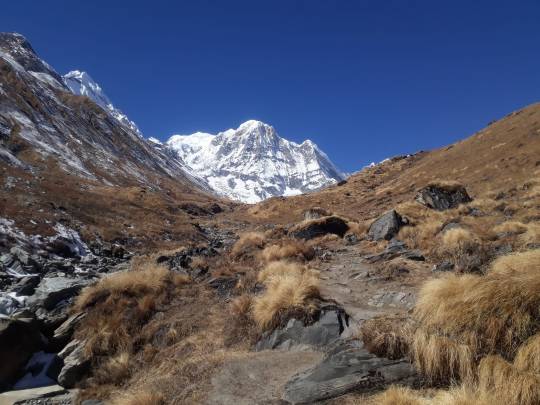
0 notes
Text
Upper Mustang Trek
Mustang lies in and around the Annapurna conservation area. So as you trek to Upper Mustang, you can catch glorious sights of the mountain ranges – including Dhaulagiri (8167m), Annapurna I (8091m), and Manaslu (8,163m).
Your journey begins with a drive from Kathmandu to Pokhara while enjoying the views of mountains, traditional villages, terraced fields, and the raging Trishuli and Marsyandi…
View On WordPress
#Adventure Travel#Helicopter Tour in Nepal#Nepal Holiday Package#Nepal Tour#Peak Climbing in Nepal#Trekking in Nepal
1 note
·
View note
Photo
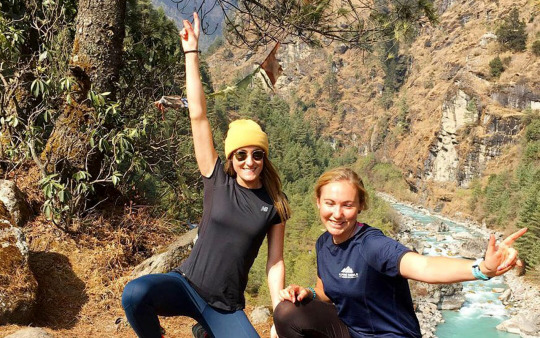
Taking us to the most iconic base camp of all at the foot of the greatest mountain in the world, Mount Annapurna (8091m), this is one of the world's classic treks. Walking through the Mountain kingdom past cultivated fields and small villages, we have time to acclimatize before reaching spectacular high altitude scenery: the incredible villages and views of Annapurna, Dhaulagiri, and other mighty Himalayan peaks. As well as reaching Base Camp, we have the opportunity to see the glorious sunrise over the magnificent mountain on Earth. #Annapurnabasecamptrek #aNNAPURNAnEPAL #tREKKING #Alpinerambletreks #ART https://www.alpineramble.com/annapurna-base-camp-trek
1 note
·
View note
Text
1 note
·
View note